The week gone by reminded me of how much of our professional and personal lives now move in cycles of disruption and restacking. The familiar often turns unfamiliar, and the tools we once assumed to be reliable constants suddenly shift under our feet. Whether in classrooms, boardrooms, or on city roads at dawn, the message seems clear: certainty has given way to orchestration, and resilience is fast replacing efficiency as the new competitive advantage.
For students and practitioners of management alike, this is both unsettling and exciting. Unsettling, because linear models no longer guarantee predictable outcomes. The best-laid pricing strategies, customer engagement frameworks, or digital transformation roadmaps can unravel when just one link in the chain falters. Exciting, because it opens up new possibilities—forcing us to think harder about value, about adaptability, and about how organisations, communities, and even individuals position themselves for the long run.
Across industries, what once appeared marginal is now central: the humble component, the unglamorous process, the background system suddenly becomes the pivot around which futures turn. This demands a new lens, one that goes beyond headlines of growth and quarterly results to understand the deeper structures being rewritten in real time.
At a personal level too, the rhythms of preparation, pacing, and endurance—whether in teaching, mentoring, or running—seem to echo the same truth. We live in a world where the finish line is less about closure and more about continuity; where every ending folds seamlessly into the next beginning.
That, perhaps, is the spirit with which this week unfolded. A spirit of reframing, rebalancing, and reimagining what lies ahead.
DTW
During the Week, an odd but telling headline in Sportstar that the Badminton World Federation has urged manufacturers to address a global shuttlecock shortage. Feather shuttles—once a taken-for-granted accessory of the sport—have seen their prices double, driven by supply-side shocks in goose and duck feathers sourced largely from China. Changing food habits, shifting farming priorities, and logistics bottlenecks have converged to squeeze supply. Badminton’s growing popularity worldwide has only intensified the crunch.
At first glance, this may appear a quirky blip confined to a niche sport. But zoom out, and the story reads like a parable of how fragile today’s global supply chains have become. One missing link—whether a raw material, a trade corridor, or even a consumer lifestyle shift—can ripple through entire industries. In the shuttlecock’s journey, we see the bigger story of The Big Restack (TBR) of global logistics: a decisive shift away from efficiency-at-all-costs supply chains towards resilience, adaptability, and intelligence.
While The Old Stack was optimised for cost and assumed stability and thus the “old stack” of supply chains was built on three assumptions: (1) scale beats redundancy, (2) geography doesn’t matter if logistics are cheap, and (3) suppliers are replaceable and infinite. This worked beautifully in a world where container shipping was smooth, energy was abundant, and trade barriers were low. Shuttlecock makers didn’t need to think about whether feather supply from China might dry up; smartphone makers didn’t lose sleep over whether one factory in Taiwan could become a chokepoint for global chips.
The cracks started showing well before COVID-19. Trade wars, rising protectionism, and climate shocks began to test the resilience of globalised systems. The pandemic merely exposed, at scale, how brittle the “old stack” really was. What followed was not just a scramble to patch gaps, but a deeper rethink: industries began to restack their supply chains.
Here, TBR is visible in miniature: shifting from a single-source, fragile supply model to a diversified, tech-enabled, resilience-first architecture. And it’s not just sports equipment—it’s nearly every industry.
Chips: The Silicon Restack
The semiconductor industry has been the most visible theatre of The Big Restack. For years, the global logic was clear: America designs, Taiwan manufactures (TSMC), the Netherlands supplies lithography machines (ASML), and China assembles and consumes. That smooth, almost modular division of labour has now collapsed under the weight of geopolitics, supply shocks, and national security fears.
The latest flashpoint came this week, when U.S. President Donald Trump announced that Washington would buy a 9.9% stake in Intel—an $8.9 billion intervention, priced at a discount, that gives the government a direct foothold in the very heart of America’s chip industry. This is not just an industrial rescue but a radical departure in the state–corporate relationship: Washington is no longer content with subsidies and tax credits (as in the CHIPS Act) but is now venturing into partial ownership of critical infrastructure.
Why does this matter for TBR? Because semiconductors are the linchpin of the entire digital economy—from AI accelerators to EV batteries to missile guidance systems. The U.S. move signals that supply-chain security is now inseparable from equity control, a pattern we may see echoed in other sectors like rare earths, lithium, and even biotech. The “restacked” model is moving away from globally optimised efficiency to domestically anchored redundancy, where states not only underwrite but also own slices of strategic firms to guarantee continuity.
For the semiconductor ecosystem, the implications are huge:
Intel may pivot from being a laggard in advanced nodes to becoming a U.S.-backed “national champion,” with privileged access to defence contracts.
TSMC and Samsung face the risk of more aggressive onshoring pushes in their key markets.
Smaller fabless firms might benefit from U.S.-backed foundry capacity, but they’ll also be exposed to politicised allocation of scarce nodes.
Seen through The Big Restack lens, this is another proof point: the semiconductor stack is no longer layered by comparative advantage, but by sovereignty-first logic, where design, manufacturing, capital, and even governance are being repatriated and vertically realigned.
Pharma APIs: The Health Restack
Another revealing case is pharmaceuticals. Over 70% of India’s active pharmaceutical ingredients (APIs) were historically sourced from China, making the “pharmacy of the world” heavily dependent on one geography. COVID-era disruptions turned that into a glaring vulnerability.
India’s Production-Linked Incentive (PLI) scheme is now pushing domestic API manufacturing. Simultaneously, Europe is investing in regionalised production of critical drugs. Multinationals are building dual sourcing strategies—China plus one other hub—to hedge risk.
This restack is not just geographic; it’s also technological. Continuous manufacturing, AI-led quality control, and blockchain-based traceability are being integrated to make supply webs both localised and intelligent. The old stack assumed globalisation guaranteed availability; the new stack assumes shocks are inevitable and must be buffered.
Shipping & Trade Routes: The Maritime Restack
Supply chains restack not just at the factory level but at the artery level—trade routes themselves. The Red Sea crisis, with shipping companies diverting around the Cape of Good Hope to avoid Houthi attacks, has shown how geopolitical risks can redraw maritime economics overnight. Freight rates spiked, lead times doubled, and energy costs soared.
The restack here is multi-pronged:
Digital twins of ports are being created to simulate and optimise rerouting.
Intermodal logistics platforms (road, rail, sea, air combined) are being orchestrated in real time by AI.
Regional trade corridors (like India-Middle East-Europe Corridor announced at G20) are being prioritised as buffers against chokepoints like the Suez or Panama Canal.
The shipping industry is restacking from a model of “cheapest route wins” to one of “redundant routes, orchestrated dynamically.”
Whether shuttlecocks, chips, APIs or ships the migration is unmistakable. The old stack was about linear pipelines—optimised for efficiency, cost, and predictability. The restacked model is about webs—redundant, orchestrated, AI-native, and resilience-led.
The shuttlecock story is therefore more than a sports anecdote; it is emblematic of how even “small” disruptions expose structural fragilities. The industries that adapt fastest are those that treat restacking not as crisis management but as strategy—anticipating shocks and designing systems flexible enough to absorb them.
Where Next?
Three directions stand out for the coming decade of TBR in logistics and supply chain management:
AI Orchestration – supply chains will be managed less by manual scheduling and more by autonomous systems making trade-offs in real time.
Localisation with Global Coordination – nearshoring and insuring production will coexist with globally synchronised demand intelligence.
Sustainability as Core Design – resilience and climate goals will merge, with green logistics and circular sourcing embedded from the start.
On similar lines of radical changes happening across entire industries, , the Managing Digital Transformation cohort attended a guest session by Sandeep Balraj, Associate Director – IT Project Management, S&P Global, on Digital Transformation with IAAS: From Project to Product. He highlighted how IAAS is enabling firms to restack their digital foundations, driving agility, speed, and customer impact. The SAFE methodology and Scrum approaches showed how organisations institutionalise agility, while real-world cases demonstrated how feature velocity is now synonymous with consumer value.
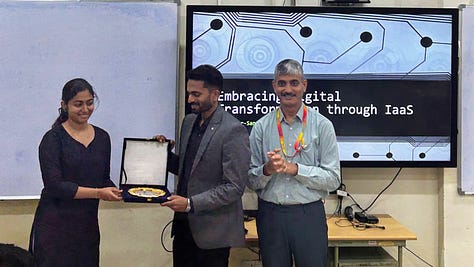
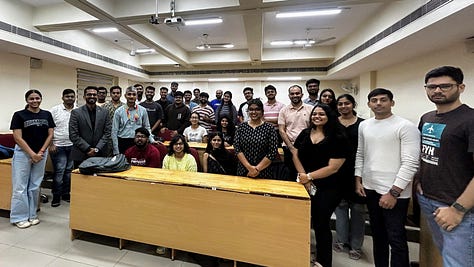
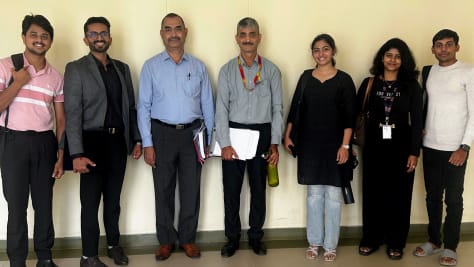
Sandeep’s insights on moving from project to product illustrate how firms are restacking IT foundations—shifting from legacy infrastructure to cloud-based IAAS. This change is not merely technical but strategic: cost efficiencies, faster feature releases, and improved customer experience now define competitiveness. For MDT students, the key takeaway is clear—today’s restack is about linking digital speed with consumer value, turning infrastructure into a platform for advantage.
In other words, industries are converging on the same conclusion: perhaps just efficiency alone is no longer the north star. The new compass points to resilience, intelligence, and adaptability. The humble shuttlecock, unexpectedly, has given us one of the clearest signals yet of The Big Restack already underway. The sweep of The Big Restack is visible across chips, APIs, shipping routes, agri-inputs—and now in the very infrastructure of logistics. The container and pallet are no longer mundane back-end artefacts; they are becoming the visible frontlines of transformation. The 20th century’s breakthrough was the global standardisation of containers that allowed scale, speed, and cost compression. The 21st century restack is about smart containers and intelligent pallets, embedding IoT for real-time traceability, shifting towards recyclable and modular designs, and tailoring units to regional or sectoral needs. Whether it is Amazon re-imagining fulfilment, Maersk pursuing net-zero shipping with bio-composite pallets, or Indian agri-exporters developing humidity-adaptive containers, the logistics base itself is being re-written.
In this sense, TBR is not a passing disruption but a re-coding of the building blocks of movement, production, and trade. Just as Intel’s restructuring with state intervention signals new industrial logics, the restack of logistics shows how resilience and sustainability will dictate tomorrow’s efficiencies. For students of digital transformation and business strategy, the lesson is clear: restacks are systemic, not sectoral. To understand the future of competitiveness, one must watch not just the glamorous technology frontiers but also the humble pallet at the dockyard.
OTW
Over the Weekend, two seemingly unrelated events shaped my days: mentoring MBA students at the India Process Expo & Conference 2025 at HITEX, and running the NMDC Hyderabad Marathon 2025. One was about navigating trade-show aisles filled with machinery, product demos, and sustainability innovations. The other was about navigating Hyderabad’s roads and inclines with grit, sweat, and rhythm. And yet, in both I found echoes of the same themes: preparation, interaction, and long-term positioning.
At the exhibition, our students were armed not with questionnaires, but with curiosity. The brief was simple—don’t treat the stalls as data points, treat them as conversations. In the bustle of booths and business cards, students learnt that B2B promotion strategy is less about selling and more about staging—an ability to choreograph stories of efficiency, reliability, and innovation in just a few square feet of space. The real test lay in observing secondary brand associations, decoding product-channel strategies, and sensing which exhibitors understood segmentation versus those who were simply present. For the students, the exercise wasn’t just an academic task but a experiential learning opportunity or rather a live rehearsal of how markets converse before they transact.
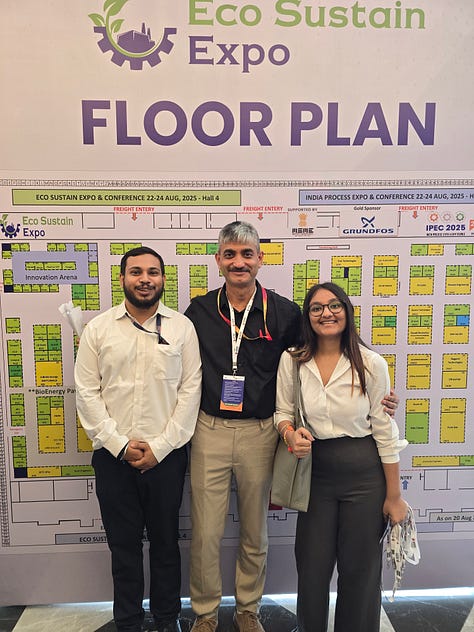
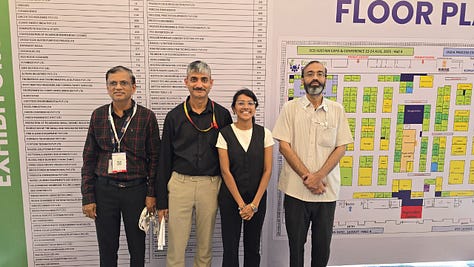
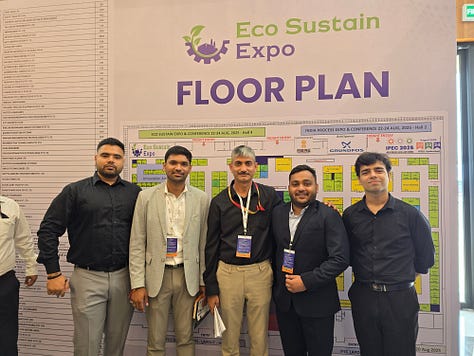
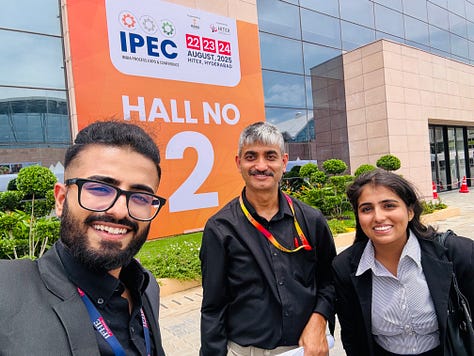
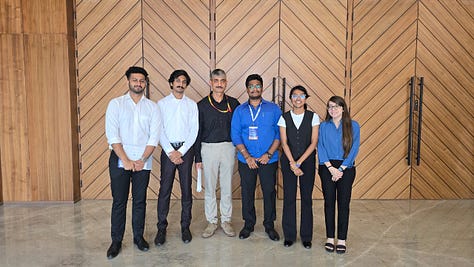
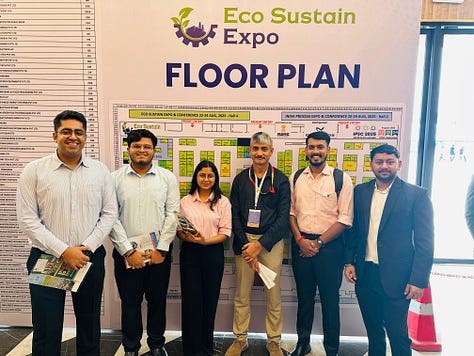

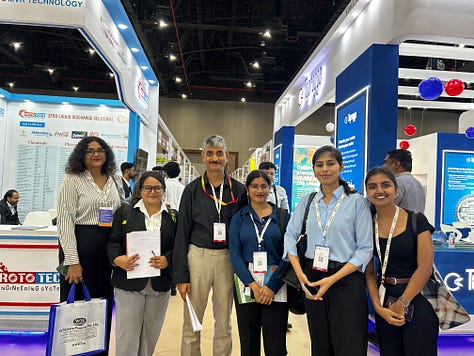

The marathon on Sunday Morning, in contrast, was solitary but equally revealing. Ten years of running full marathons since 2015 has taught me that every race is both predictable and unpredictable. You know the distance, you train for it, you plan hydration—but the body and mind surprise you somewhere between the 36th and 40th kilometre.
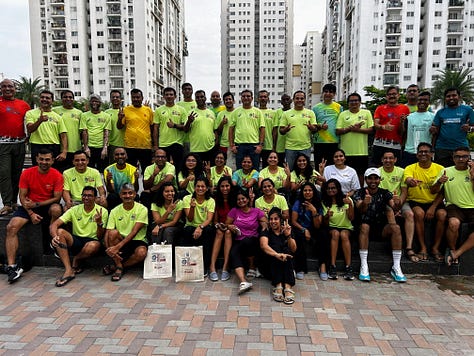
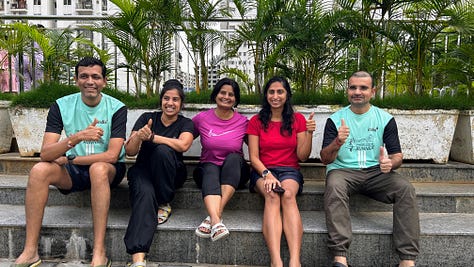
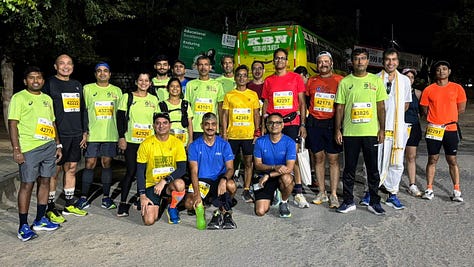
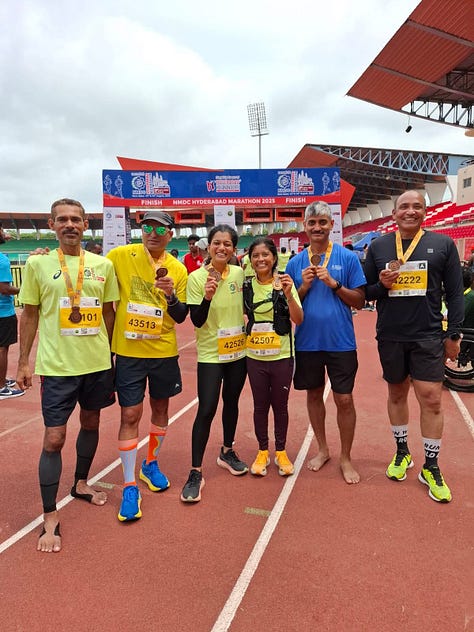
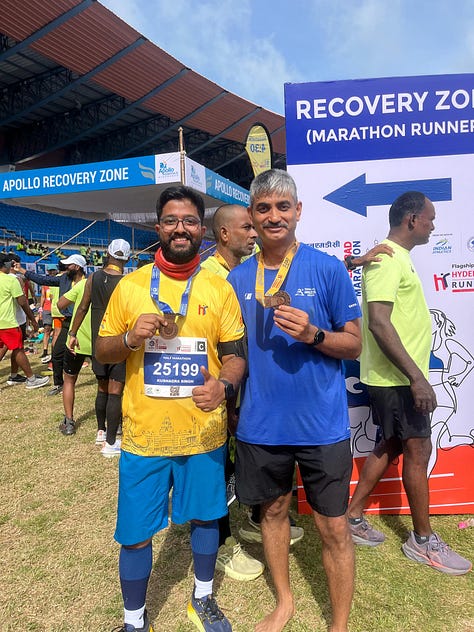
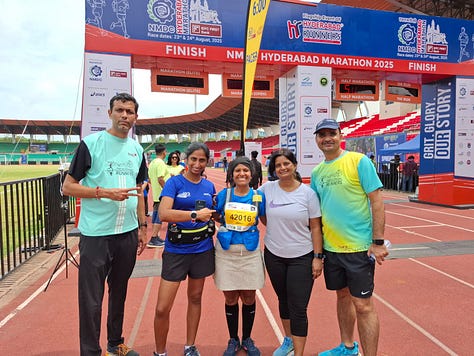

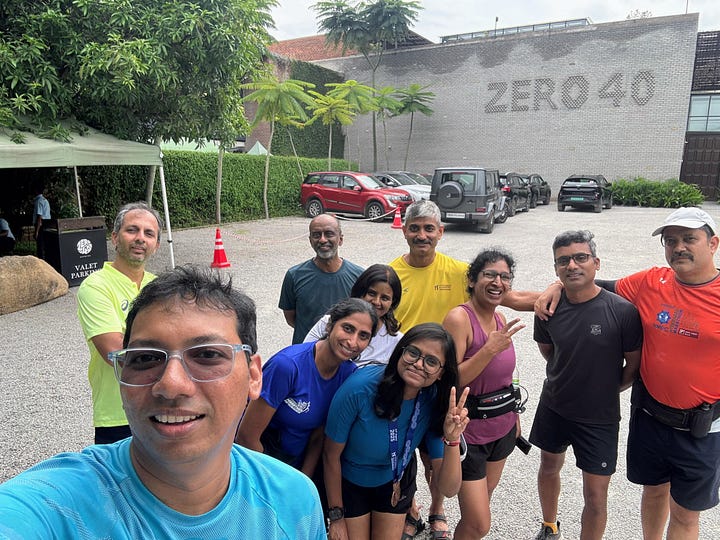
Fortunately, the volunteers, the Hyderabad Runners’ Society, and my Peerancheruvu Runners friends formed the support ecosystem—reminding me that even in an individual sport, community scaffolding determines endurance.
When I compared the two experiences, a common thread emerged: the art of sustaining engagement under pressure. Exhibitors who could hold attention amidst competing booths resembled runners who could hold pace amidst fatigue. Both succeed not by brute effort alone but by pacing, signalling, and clarity of message. This weekend, then, wasn’t about two separate events. It was about one underlying lesson: whether in markets or on roads, those who prepare with discipline, engage with curiosity, and endure with patience build lasting brands—be it companies or individuals.
For students, the marathon metaphor is apt: B2B marketing is rarely about one-shot conversions. It is about staying power, building rhythm, and knowing when to surge and when to conserve. Perhaps, same applies for the ensuing placement season at BS Hyderabad.
See you soon at another finish line.
I Love You
Shailendra


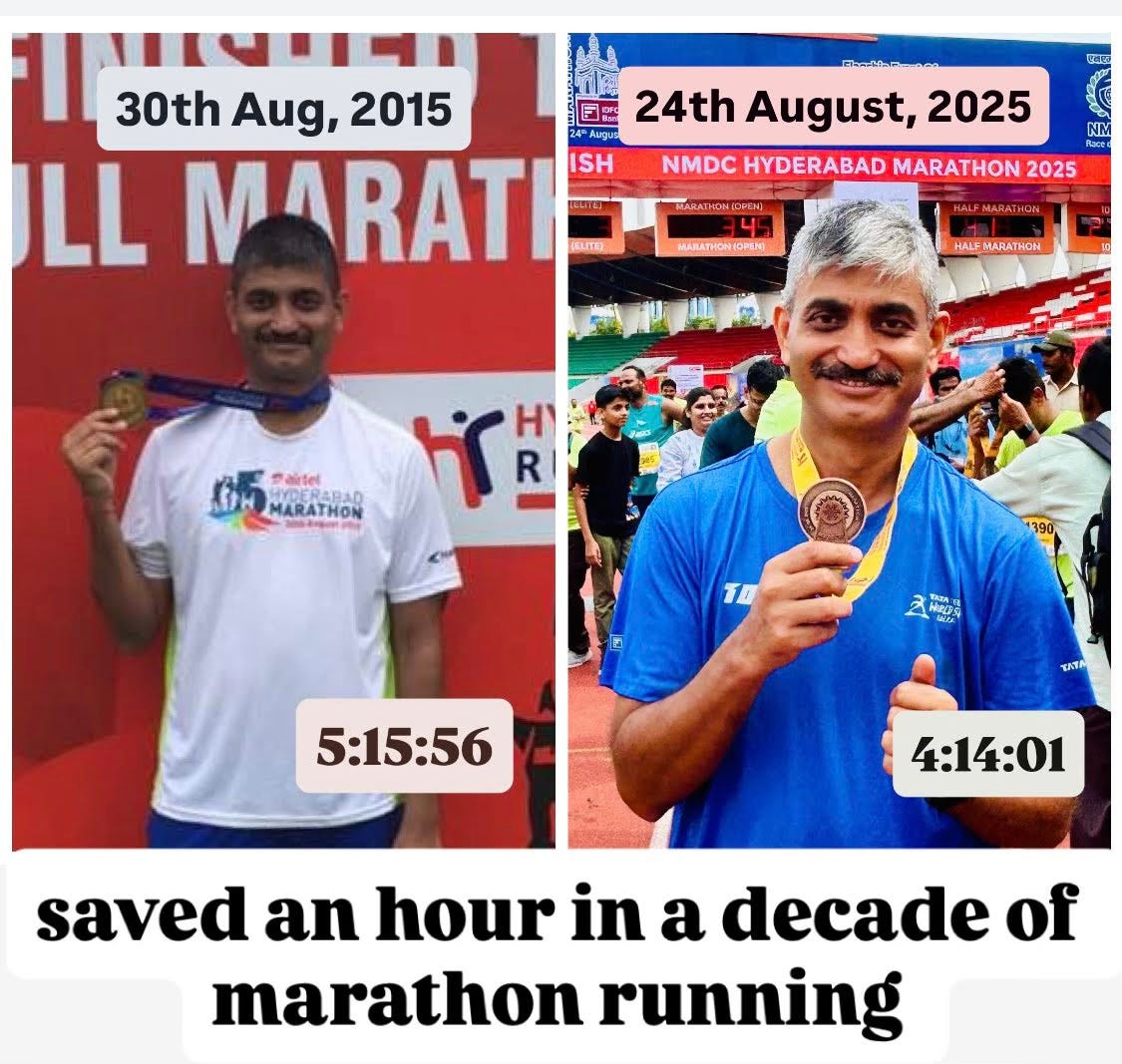
Well written. Interesting insights.
This is an excellent read. Helps a layperson get an insight into the way the world supply chain logistics are changing.